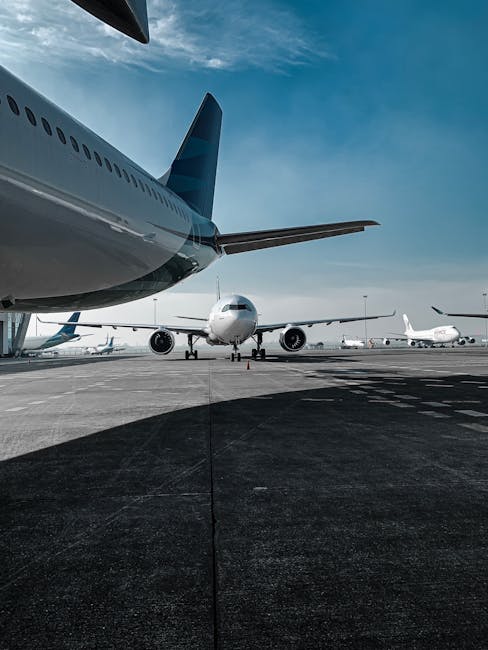When you picture the golden age of regional air travel in New England, Provincetown-Boston Airline—affectionately known as PBA—stands out as both a trailblazer and a survivor. For over four decades, this iconic commuter airline bridged coastal communities, pioneered short-haul innovation, and fostered a unique flying culture that shaped the East Coast’s aviation tapestry.
The Humble Takeoff: A Seaside Vision Takes Flight
Provincetown-Boston Airline’s story begins on the windswept tip of Cape Cod in 1949. Founded by John C. Van Arsdale, a former pilot with a vision, PBA started as a modest air taxi service. Its first route? A spectacular hop over Cape Cod Bay from Provincetown to Boston—just 45 minutes by air compared to several hours by road or ferry.
This period in postwar America was fertile ground for aviation. Small towns, previously isolated by geography, yearned for faster connections to urban centers. Pioneers like Van Arsdale recognized that light twin-engine aircraft, like the Piper Navajo and Britten-Norman Islander, could serve short runways and small airports ignored by the big carriers. With its first flights, PBA helped spark the American regional airline revolution.
Expanding Horizons: From Cape Cod to the Sunshine State
By the 1960s and 1970s, PBA was on the move. The airline’s growing fleet—now including the reliable Douglas DC-3, Embraer EMB-110 Bandeirante, and Cessna 402—enabled it to reach new destinations across New England. But it was the airline’s bold leap southward that set it apart. In 1969, PBA began offering winter service to Florida, linking Boston with destinations like Naples, Key West, and Miami. The “Airline with the Florida Accent” was born, and snowbirds rejoiced at the convenience and charm of these seasonal flights.
PBA’s colorful livery, friendly crews, and quirky marketing—such as “free coffee and doughnuts before every flight”—endeared it to locals and vacationers alike. At its peak, the airline operated more than 100 daily flights and became the nation’s largest commuter carrier by passenger volume. For many, a trip on PBA was their first introduction to air travel, and the airline’s approachable atmosphere made flying feel personal, even magical.
Why PBA Mattered: Bridging Gaps and Shaping the Industry
Provincetown-Boston Airline’s significance extends far beyond its scenic routes and family-owned ethos. Here’s why its legacy endures:
- Accessibility: PBA brought air service to dozens of small communities, connecting them with economic and social opportunities that would have been out of reach. Towns like Provincetown, Hyannis, and Martha’s Vineyard thrived thanks to reliable air links.
- Innovation: The airline was an early adopter of the hub-and-spoke model—long before it became standard practice. By funneling passengers through key hubs like Boston and Miami, PBA maximized efficiency and expanded its network.
- Commuter Culture: PBA’s frequent, short-haul flights created a commuter culture on the East Coast. Business travelers and locals grew accustomed to “hop-on, hop-off” air service, foreshadowing today’s regional jet and turboprop operations.
- Fleet Diversity: The airline’s eclectic fleet—from piston twins to classic DC-3s—showcased the adaptability of small aircraft in commercial roles. PBA was also among the first regionals to operate Brazilian-made Embraer turboprops in the United States.
Challenges, Turbulence, and a New Chapter
No airline’s journey is without headwinds, and PBA faced its share. The 1980s brought regulatory changes, rising costs, and increased competition from larger airlines and newer regional carriers. Accidents and operational difficulties tested the company’s resilience. However, perhaps the greatest challenge was the evolving economics of regional air service, which pushed many independents toward code-share partnerships or mergers.
In 1986, PBA entered a new era as it was acquired by People Express, and shortly thereafter, by American Airlines. The airline was folded into American Eagle, but the PBA name and spirit lingered on. Many of its alumni went on to shape regional aviation across the United States, bringing their expertise and passion to new ventures.
Enduring Impact: What PBA Gave to Aviation
Provincetown-Boston Airline’s influence continues to resonate, even decades after its final flights:
- Blueprint for Regional Success: Modern regional airlines owe much to PBA’s pioneering multi-stop routes, flexible scheduling, and community-based approach. The airline’s knack for matching the right aircraft to the right market remains a guiding principle in regional aviation.
- Cultural Legacy: PBA’s story is woven into the history of New England and Florida air travel. Its memory is preserved in local museums, enthusiast groups, and the countless passengers who recall their first flight aboard a PBA twin.
- Technical Lessons: The airline’s experience operating diverse aircraft in challenging environments—think foggy Cape Cod mornings or busy Miami afternoons—advanced operational safety, maintenance practices, and pilot training for the entire industry.
Stories from the Cabin: Nostalgia and Enthusiasm
Ask anyone who flew or worked for PBA, and you’ll hear tales of adventure and camaraderie. Pilots navigated unpredictable weather and tight runways with skill. Passengers forged friendships on short flights where everyone seemed to know each other. Spotters and enthusiasts recall the distinctive “PB” tail markings and the sight of a DC-3 turning final at Provincetown’s tiny airstrip.
PBA’s ability to blend professionalism with personality set a benchmark for customer service that many modern airlines aspire to recapture. Whether you were a nervous first-time flyer or a seasoned commuter, PBA made every flight feel special.
Conclusion: The Spirit of PBA Lives On
While Provincetown-Boston Airline is no longer in the skies, its legacy is very much alive. Each time a regional turboprop touches down at a small-town airstrip, or a commuter hops a quick flight to visit family, PBA’s pioneering spirit is honored. The airline proved that regional carriers are more than just feeders for the majors—they are lifelines for communities, innovators in their own right, and keepers of aviation’s most human traditions.
For forty remarkable years, PBA wasn’t just an airline—it was a bridge, a family, and a symbol of what’s possible when vision and passion meet the open skies. To all who remember its distinctive aircraft humming over New England and Florida, PBA will always be the little airline that could—and did.



